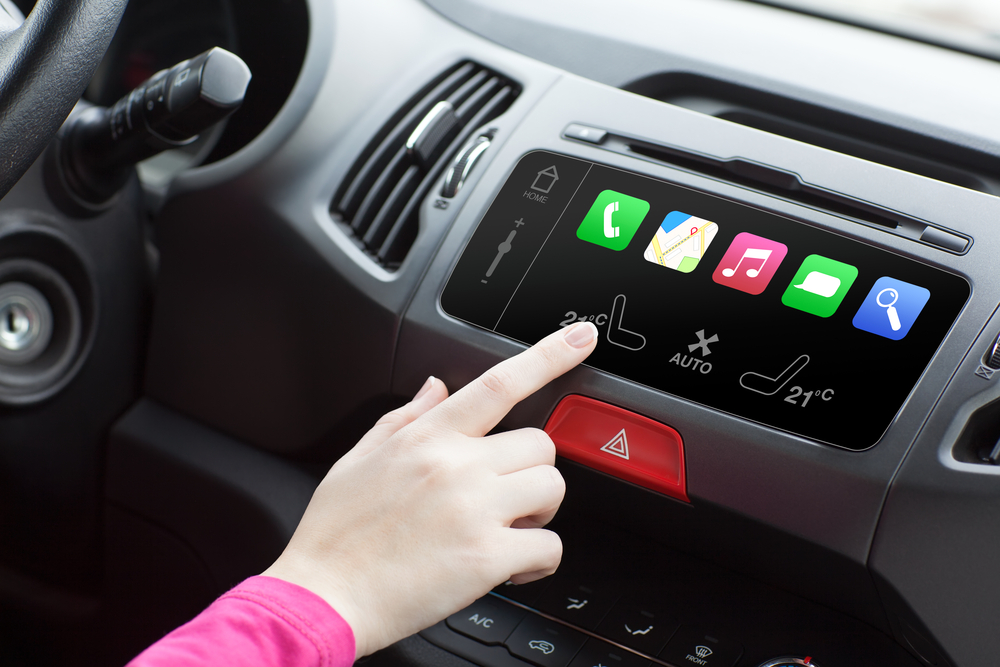With all of the high-tech features of today’s smart cars, it’s hard not to join the conversation around distracted driving. From mesmerizing dashboard displays and infotainment centers to built-in GPS and Wi-Fi, new technology plays a huge role in how we interact with our vehicles.
But in an ironic twist, the very features that are supposed to make driving easier and safer have actually led to more accidents on the road. In 2015, distracted driving was the cause of 3,477 deaths with an additional 391,000 injured in car crashes. Here’s why some features could pose a potential safety issue and how to use them without putting yourself at risk.
Distracted Driving: More than Texting
You’ve probably seen campaigns centered on texting and driving. In fact, 15 U.S. states have made it illegal, slapping you with a hefty fine if caught on your phone behind the wheel. But it’s important to note that distracted driving includes anything that requires you to take your eyes off the road (with texting being one of the biggest offenders). Other activities could include putting directions into your GPS, talking on your phone through Bluetooth, or scrolling through social media on your infotainment center.
Navigating Safely with GPS
The evolution of mapping technology has made driving easier, faster and safer. Gone are the days of giant paper maps and pages of printed directions. However, the University of Utah discovered entering a destination into a GPS takes drivers an average of 40 seconds to complete. While programming an address into your GPS might seem like a minor distraction, taking your eyes off the road for 40 seconds is extremely dangerous.
SCENARIO: While driving, there’s been a change of plans. You need to input a new address which will cause you to focus on something other than the road.
SOLUTION: Pull over and park your car, then input your new trip.
Conversations through Bluetooth
Hands-free innovation has enabled our phones and cars to sync up — no fussing with cords, no punching in phone numbers and no texting. Both hands are on the wheel and your eyes are on the road. Simple, right? Not so fast. A recent study asked participants questions while driving (replicating real-life mobile conversations) and found that, even with their eyes zeroed in on a hazard, they failed to recognize them.
SCENARIO: While driving, you receive an incoming phone call that you know will be unpleasant. Your heart starts racing, your mind is somewhere else, and suddenly, you’re no longer focused on the road.
SOLUTION: Allow the other person to leave a voicemail and refocus on driving. Call them back when you’ve reached your destination.
Stop Dashboard Distractions
Today’s mesmerizing dashboards draw you in with their sleek, futuristic feel. Manufacturers have even made icons and letters bigger so they’re easy to read. But according to a report from AAA, drivers who tested 30 of the 2017 model year vehicles all took their eyes off the road and hands off the wheel while using infotainment systems.
SCENARIO: While driving, you have an urge to listen to a specific song. Using your Wi-Fi-connected dashboard, you search for the song on a streaming service, and you are no longer focused on the road.
SOLUTION: Before your trip, find your favorite radio station or album (and stick to it). Resist the urge to scroll through social media or use Wi-Fi.
Technology Isn’t All Distracting
Although some tech in today’s smart cars can lead to distracted driving, it’s worth noting that there are many advanced safety features to help deter accidents. Here are a few that help enhance your focus on the road:
- Cameras that read lane markings and use Electric Power Steering to keep your vehicle centered in its lane.
- Collision warning technology that monitors your speed and braking — ultimately alerting you of an impending collision.
- Cameras and sensors that can see beyond what the human eye can spot at night (or behind).
As automakers continue to build smarter cars with cutting-edge innovation, it’s important to understand how to safely use this evolving technology.
In a recent Esurance report on distracted driving, Brandon Schoettle, a project manager at the University of Michigan’s Transportation Research Institute, noted that “We are at a point where you can take your hands and feet off the controls for the most advanced systems, but not yet to the point where you can turn your brain off.”
By keeping your eyes and attention on the road at all times, you can avoid putting yourself and others at risk.
___________________________________
Haden Kirkpatrick is the director of marketing strategy and innovation at Esurance, where he is responsible for all initiatives related to product and service innovation. He manages the annual planning processes for the marketing and service business units. Haden is an innovator who is constantly thinking about how IoT, blockchain and machine learning will impact the insurance industry. He is also a mobile guru, aspiring yogi and mixed martial artist.







